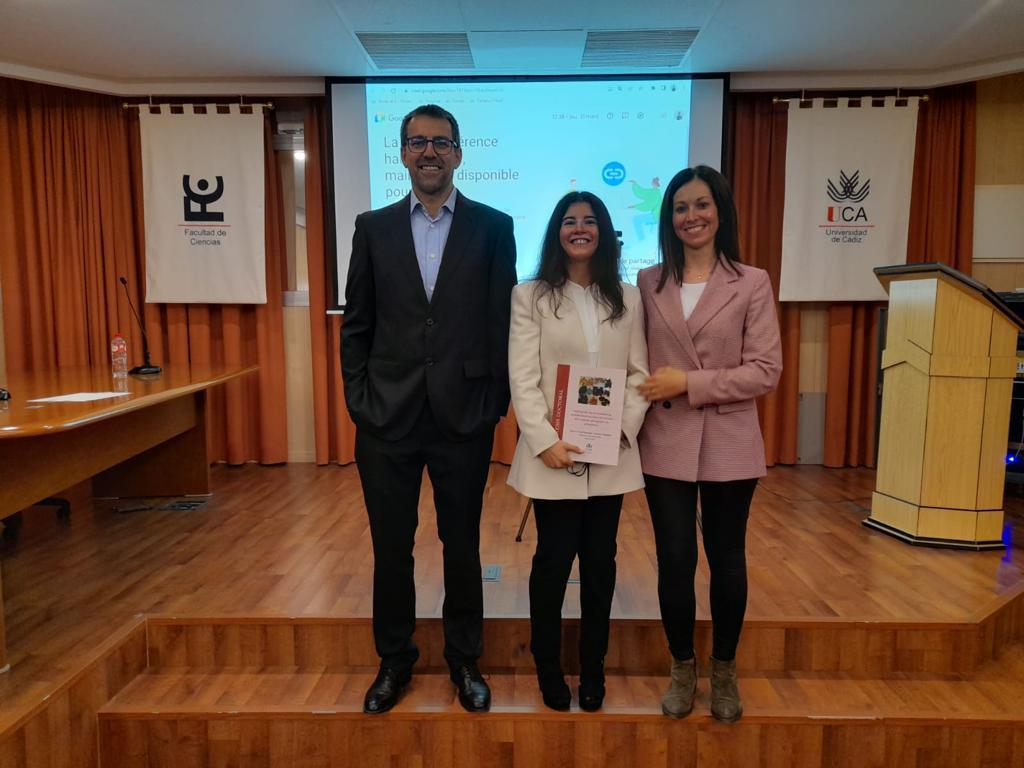Author: María de las Mercedes Vázquez Espinosa
Supervisors: Dr. Gerardo Fernández Barbero, Dra. Estrella Espada Bellido
DOI
- Simultaneous determination by UHPLC-PDA of major capsaicinoids and capsinoids contents in peppers à doi:10.1016/j.foodchem.2021.129688
- Optimizing and Comparing Ultrasound- and Microwave-Assisted Extraction Methods Applied to the Extraction of Antioxidant Capsinoids in Peppers à doi:10.3390/agronomy9100633
- Influence of Fruit Ripening on the Total and Individual Capsaicinoids and Capsiate Content in Naga Jolokia Peppers (Capsicum chinense Jacq.) à doi:10.3390/agronomy10020252
- Changes in Capsiate Content in Four Chili Pepper Genotypes (Capsicum spp.) at Different Ripening Stages à doi:10.3390/agronomy10091337
- Content of Capsaicinoids and Capsiate in “Filius” Pepper Varieties as Affected by Ripening à doi:10.3390/plants9091222
Thesis Abstract
In recent decades, the link between nutrition and health has gained universal acceptance, and therefore, increasing importance has been given to plant-based diets rich in antioxidants. The pepper is one of the most valuable vegetable crops in the world due to its organoleptic properties, its richness in bioactive compounds and its strong antioxidant capacity. Its consumption has greatly increased, but currently society not only demands a greater production of the traditional crop but also improved versions that contain beneficial compounds for health.
The consumption of spicy peppers (chili peppers) is generally associated with hot, burning or stinging sensations. The pungency of these fruits is due to two groups of chemical compounds known as capsaicinoids and capsinoids. These compounds have exhibited a large number of biological properties of pharmacological relevance, such as antioxidant, anti-inflammatory, analgesic, antimicrobial, anticancer, or antiobesity treatments. However, capsinoids have a much lower level of pungency, which makes them have a greater applicability in culinary applications, concentrates and pharmaceutical industry, since it would not be limited by pungent characteristics.
The detailed analysis of these compounds has often been disadvantaged both by inherent problems to the crops, and by the absence of affordable methodologies with a sufficient degree of optimization. For this reason, it is necessary to develop and optimize separation and extraction techniques that allow studying the chemical composition of different varieties of pepper and indicate those that are rich in the compounds of interest to obtain higher quality extracts. In this way, these methods would be of great value for analytical laboratories, as well as for companies or industries, since they allow evaluating the quality of different varieties and achieving a better selection of the final product thanks to its analytical quantification.
In relation to the separation and quantification of bioactive compounds, by far the most widely used technique are high-performance liquid chromatography (HPLC) and, more recently, ultra-high-performance liquid chromatography (UHPLC).
Regarding the extraction process of the chemical compounds from the plant matrix, there has recently been a growing demand for techniques that shorten analysis times, reduce the consumption of organic solvents and have greater efficiency and performance. Green techniques are born to respond to the challenges of the 21st century to protect both the environment and consumers. These techniques include ultrasound assisted extraction (UAE) and microwave assisted extraction (MAE).
The interest in the study of the antioxidant compounds accumulation during the plant maturation is increasing because its content is considered an important parameter with respect to the quality of fruits and vegetables. Peppers are eaten and harvested at different stages of ripeness, from unripe green to fully ripe. Throughout the maturation, numerous biochemical, physiological, and structural changes occur. These variations not only have well-known agronomic implications (flavor, color, aroma, size, postharvest sensory properties), but are also relevant in determining their use and quality.
In this Doctoral Thesis, the development and validation of a UHPLC method has been carried out, which allows the simultaneous separation and determination of the five major capsaicinoids (n-DHC, C, DHC, hC, h-DHC) and the two main capsinoids (CTE and DHCTE) in peppers. The separation of all the compounds of interest with good resolution has been achieved in less than 2 minutes.
Then, the extraction of the compounds of interest from the pepper has been optimized by means of ultrasounds and microwaves. To evaluate the effect of the independent variables on the extraction efficiency, a statistical mixture design and a Box Behnken design of experiments (BBD) are used in order to determine the optimal conditions. The optimal conditions for UAE were 5 minutes of extraction time at 5.5 ºC of temperature, pH 8 and using a ratio of 0.2:14.5 g:mL; and for MAE they were 5 minutes of extraction time at 60 ºC of temperature, pH 8 and a ratio of 0.2:15 g:mL. The methods have proven to be accurate, reproducible, inexpensive and fast to obtain high recoveries of the compounds of interest.
Finally, changes in the capsaicinoids and capsinoids concentration throughout maturation in different varieties of pepper has been studied. It is intended to determine which is the optimal harvesting moment, and if the trend is the same in capsaicinoids and capsinoids, as well as in different varieties sown under the same cultivation conditions, irrigation, temperature, humidity and fertilization.


